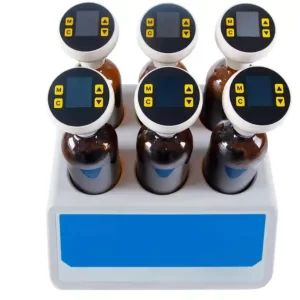With an increase in technological integration in our lives, we now rely on data to enhance the performance and efficiency of things around us. Datification is the process of converting our daily life behavior, choices, characteristics, and aspects into data.
Datification is the heart of data science since the whole science of data revolves around data that is manipulated to get the inside information. It starts from data collection, cleaning, sorting, analyzing, and finally turning it into visualized scenarios that help in designing and understanding the ongoing trends. (Blei and Smyth, 2017)
Datification is basically an encapsulation of concepts, ideas, behavioral patterns, thoughts, and choices into a data form. It is a concept which, with the help of technology, turns the invisible data into a computerized form that projects varying trends, patterns, and behaviors to make it useable.
Why Do We Need Datification?
From applications and products to business decisions, medical researches to critical insights, we need data to move forward. Datification helps catering the desired and targeted group of audiences in order to serve them according to their preferences. It is the data that actually drives the artificial intelligence and makes it intelligent enough to an extent where it becomes capable of imitating and predicting human behavior.
Datification in Our Daily Lives
The daily activities which we do around the year are monitored with the help of smart appliances that convert them into data. We all are contributing to a business when we give our feedback or simply let them know our preferred places of visit, like dining out and shopping. With the help of GPS in our smartphones and devices, we provide data that helps them understand our choices.
What happens next?
We start getting targeted ads that are based on our data history, and in this way, we assist business promotions. This data is studied to analyze our behavior and choices through various tools and techniques in a bid to further enhance our experiences. (Ali and Bhaskar, 2016)
How is Datification Done?
GPS Locations
The GPS in our mobile phones and devices track our locations and most visited places. This information is used in many productive ways. It helps relevant authorities to understand the activity preferences at specified times. The vehicle traffic data that is monitored on a certain street at a certain time can be utilized by applications and websites like google map which shows you the traffic density on different spots and suggests an alternative route to reach your destinations.
GPS location information collected through various apps can also help draw demographic information, which is used in surveys and product designing by mobile app development companies. It enables them to know what age group, sex, and nationality are using their products the most.
Fitbit
The process of datification is becoming automated now. As many fitness applications that provide you recommendations based on your daily activities, your meal intake, the amount of water you consumed, etc. Fitbit application tracks your activities such as how many steps you have taken in a certain day or time, the amount of distance you have covered, your heartbeat, calories burnt, and your sleeping patterns. The application then provides you insights into your overall progress and also offers a customized health plan for you to progress further in staying healthy. If you are impressed by their feedback, you will surely opt for buying their full plan.
Websites
When you visit a website, you are prompted to allow cookies. A cookie is a small file that has some of your information like the IP address, your browser type and version, and even your location. You might have also seen that many websites have visitor counters displayed on their pages, which tracks the numbers of people currently active on their website. They also track location through IP addresses to be able to learn the reach of their website and content.
Datification in Social Media Platforms
Social media platforms are the biggest depository for data collection. The social media app, where you show your likes and dislikes, the way you express your thoughts, your preferences, all are converted into data. The technique used to extract data here is based on a high-end programming language called Neuro-Linguistic Programming (NLP). Tools are developed based on NLP, which are able to detect sentiments with the help of linguistics. It analyses the text and words that predict the reaction against a certain incident, product, or campaign.
Events
When you check in to an event, a musical concert, charity shows, or a webinar, you mark your presence there with the help of GPS location or tagging the place or location on social media websites like Facebook or Instagram. When you come across such events on Facebook, you are given several choices which intend to know your reaction towards those events. That choice demonstrates your likes and dislikes, and Facebook keeps track of your visited events and even the ones you are interested in or not interested in. Based on these choices, the analytical engines draw a behavioral pattern associated with you, and the upcoming events are suggested according to those choices made in the past.
Search Engines
Search engines track the searches that you have made through texts, images, and even voice notes. It helps them to predict your choices and preferences, and then they tailor the targeted ads towards you. This is how google ads work to be specific. This information, in turn, helps companies to find the correct audience for their products as well as develop customized data mining tools through open source technology. The databases and search engines that function in compliance with the Health Insurance Portability and Accountability Act (HIPAA) facilitate treatments and reviews preliminary to health research. (Erinjeri et al., 2009)
The data insights can also show what type of product or word is most searched in which region of the world and what product is popular among a certain age group, sex, and nationality.
How is Datification Useful?
Datification is helping industries in many ways. The process of data collection is being done with the help of devices used by people. We all are contributing to datification in our daily lives, which helps marketing companies, policymakers, and product designers.
Here we will try to shed light on how datification is helping several industries and how they are using the technology to maximize the profits.
Datification in Medical Science
Like other industries, data is extremely important in the field of medical sciences for research and analysis purposes. The current advancement in medicine, clinical science, surgeries, and the impact of food and diet is all achieved with the help of past data along with the datification of procedures that were undertaken for different cases. The effects of medicines on human anatomy and psychology are digitalized with the help of technology. This data is used by organizations concerned with public health, which raise awareness about critical illness and conditions. It is also used by governments to devise health policies and programs to benefit their citizens by investing in researches to cure these ailments. (Hoeyer, Bauer, and Pickersgill, 2019)
Datification in Human Resources
The online job portals, where you create a profile and apply for a job after entering your credentials, education, age, sex, work experience, etc., are categorized under human resources.
The most famous and widely used professional networking website is LinkedIn, where you can create your profile, add skill, and apply for jobs. This platform also provides you to connect with people who have a similar skill set, profession, and industry. LinkedIn has been helping people advance their skills and learning through premium memberships too. This expands your professional circle and possibilities of getting better jobs. It is also said that the profiles also help HR managers to understand your personality traits. Many companies nowadays are asking their employees to provide their social media ids too. This helps them to analyze the personality traits of a person and helps them understand the temperament and behavior of the applicants, which strongly impacts their hiring decision.
Datification for Business
There are many websites dedicated to surveys and reviews only. Many of them are paid and require a person to be of a certain country or region for their required survey. They gather information in the form of small chunks of data like your food choices, outing and desired travel locations, and an estimated amount of money you can spare or save to spend on these vacations or shopping. Many corporate websites prompt you to give a short survey after browsing their website to improve customer experience. They actually convert your experience and time on their website into useful data.
Big Data
Since we are discussing and working on data, let us go through big data, for it has a consequential role in data science. You might have heard about it. If not, then we are here to tell you. The term big data is used in reference to the complexities of science behind all the data. It is the food of data science and the center on which the whole realm of data science is based and revolves. It is the massive amount of data present in huge volumes with a rapid rate of change.
Big data consists of structured, semi-structured, and unstructured data. It is collected for research purposes, improvements, and everything we have talked about in terms of data science. Big data is a mixture of three things, which are also known as the key concepts or fundamentals of big data. These key concepts are volume, velocity, and variety. The volume of data collected is huge, it is generated at a very fast pace, and it is full of variety. It can be in the form of images, text, audio, document, etc. It is collected through various forms so that it can be mined for further information and used in artificial intelligence, software designing, machine learning, predictive modeling, and other advanced analytics applications. (Sivarajah, Kamal, Irani, and Weerakkody, 2017)
Big data is used by mega establishments for improved operations. They furnish a better user experience and make customized drives that focus on a larger audience; it is profitable for the organization as well as increases outcomes.
Conclusion
Datification is undeniably the core and most important aspect of data science. It is astonishing to see how our daily lives are being transformed into data with the integration of technology. International Data Corporation (IDC), which is one of the leading companies in providing marketing data and insights to many industries, claims that 90% of the data collected by companies remains unused. This unused data is referred to as Dark Data and is deleted after a specific period or sometimes manually.
As artificial intelligence accelerates towards innovation and advancement, we shall be able to witness a new era in which new techniques will be devised to manipulate unused data through automation.
References
- Blei, D.M., &Smyth, P. (2017, August 15). Science and Data Science. Proc Natl Acad Sci U S A, 114(33), 8689-8692. http://doi.org/1073/pnas.1702076114
- Bhaskar, S.B., & Ali, Z. (2016, September). Basic Statistical Tools in Research and Data Analysis. Indian J Anaesth, 60(9), 662–669. https//:doi.org/4103/0019-5049.190623
- Erinjeri, J.P., Koppel, P., Picus, , Prior, F.W., & Rubin, D.A. (2009, August). Development of a Google-Based Search Engine for Data Mining Radiology Reports. J Digit Imaging, 22(4), 348–356. https://doi.org/10.1007/s10278-008-9110-7
- Bauer, S., Hoeyer, K., & Pickersgill, M. (2019, August). Datafication and Accountability in Public Health: Introduction to a Special Issue. Soc Stud Sci, 49(4), 459–475. https://doi.org/1177/0306312719860202
- Kamal, M.M., Irani, Z., Sivarajah, U., &Weerakkody, V. (2017, January). Critical Analysis of Big Data Challenges and Analytical Methods.Journal of Business Research, 70, 263-286. https://doi.org/10.1016/j.jbusres.2016.08.001Get rights and content












